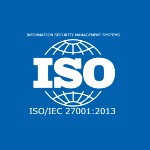Supply Chain Shifts in the Ever-Tumultuous Health Industry
Posted by | Fuld & Company
Capitalism has its flaws. Economists as diverse as Adam Smith to Karl Marx would agree to this premise. Yet one strength that capitalism brings to bear in the marketplace is efficiency, particularly the ability to identify and capture substitute products and services when supply and demand constrains efficient market activity. Nowhere is this dynamic more apparent than in the healthcare supply chain in the seemingly ever-tumultuous health industry.
The latest example of players creating their own efficiency amid disorder has arisen – hospitals establishing their own healthcare supply chains and markets for pharmaceuticals. The New York Times reported yesterday that, facing the lack of appropriately priced and sourced drugs, hospitals are creating consortia or not-for-profits to locate reliable manufacturers of certain drugs and negotiate pricing for those affiliated providers. If ever there were a need for pharmaceutical executives to analyze contributing factors, this is one.
The problem of supply and price manipulation is real, as any insurer or recent hospital patient can attest: in 2015, Valeant Pharmaceuticals International pushed its business model of buying up drugs, then raising the prices steeply and quickly. It sharply raised the prices of heart drugs Nitropress and Isuprel, adding millions to hospitals’ – and patients’ – drug bills. Even in non-nefarious situations, supply challenges arise such as the difficulty in obtaining heart medicine nitroglycerin, injectable morphine, and lidocaine, which is used to numb tissue before surgery. These and scores of other pharmaceuticals are created by a limited number of manufacturers.
While some providers have previously worked with drug manufacturers on an individual basis, the scale of this current effort signifies a market change on the scale of the CVS / Aetna acquisition. Ascension, the nation’s largest nonprofit hospital group, is planning to establish a not-for-profit that would serve as a pharmaceutical marketplace for its providers. Its reach is profound: 2,500 sites of care, including 141 hospitals and more than 30 senior care facilities in 22 states and the District of Columbia. Intermountain Healthcare, a not-for-profit health system based in Salt Lake City, with 22 hospitals, has been the first to market with this approach.
What is noteworthy is the interest expressed by the U.S. Department of Veterans Affairs. Prescription drug spending by the Veterans Affairs totaled approximately $7 billion in 2017, ten percent of total health spending offered through the agency. The fact that the Veterans Affairs, an organization that has statutorily mandated access to favorable drug pricing, is interested in participating in this new market suggests that such “favorable drug pricing” is not always as favorable as it can be.
This shift in healthcare supply chain and subsequent market dynamics is an alarm for executives in the pharmaceutical industry, which it must be emphasized, is largely effective in manufacturing and distributing high-quality drugs, and does so with integrity. Yet, the disorder in the health industry, together with increased patient expectations, identify gaps and often make previously effective methods inadequate.
Considering some trends that we have seen impacting our health and life science consulting clients, one can understand that the rise of provider-driven pharmaceutical markets is only one of potentially others that will impact the drug market.
- The advent of value-based health care will likely result in increased measurement of pharmacoeconomic performance of medicines.
- Demand for medicines is growing rapidly in emerging economies, where pharmaceutical firms do not often have plants or distribution capabilities.
- Physicians face increased pressure about what they can prescribe and to whom.
And, as outlined above, in cases in which supply and demand are manipulated, hospitals and hospital groups are calling upon creative capitalism to solve that problem. Add to these sample trends strict regulatory processes and the morphing of providers and payers as signified by the CVS acquisition of Aetna, and pharmaceutical executives are well-advised to consider the future marketplace and to do so in a structured and comprehensive manner start by collecting robust market insights and perhaps conduct scenario planning workshop or war game.
Tags: BioPharma, Competitive Intelligence, Competitive Strategy, Healthcare & Life Sciences, Pharmaceuticals, Scenario Planning



















